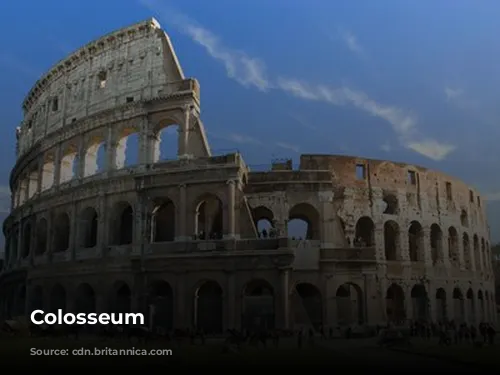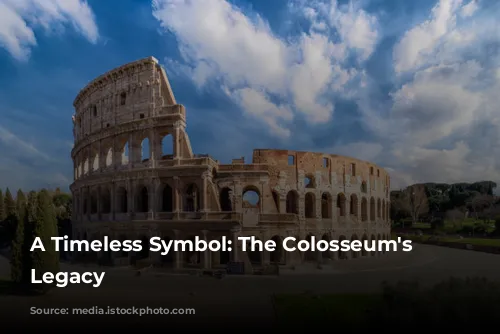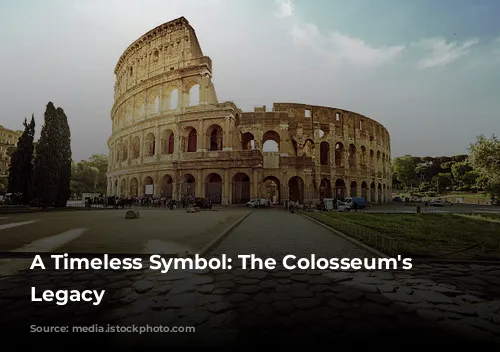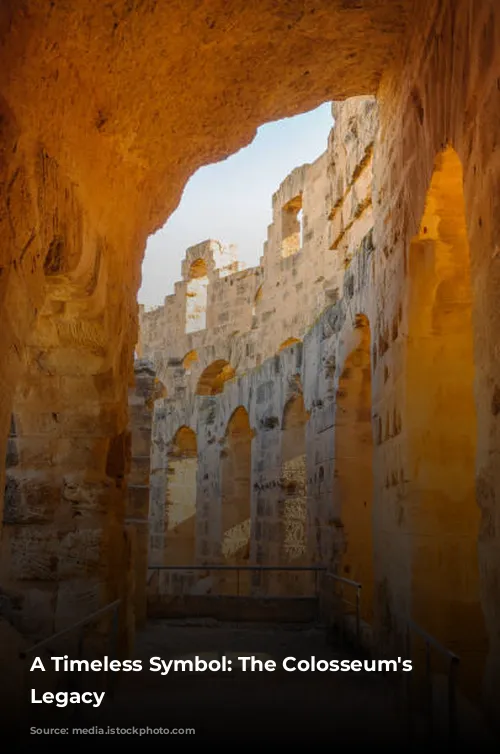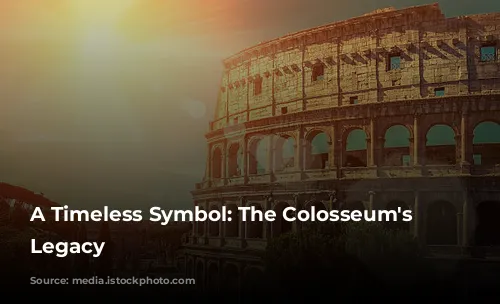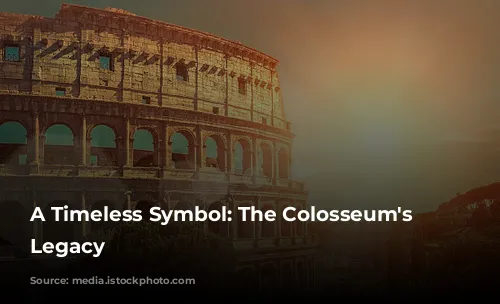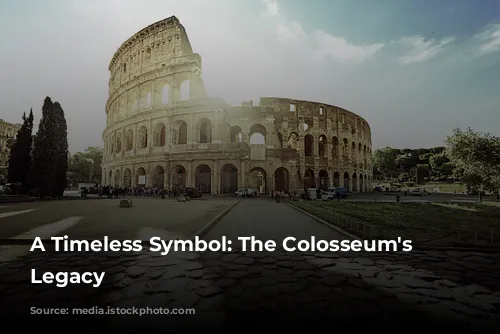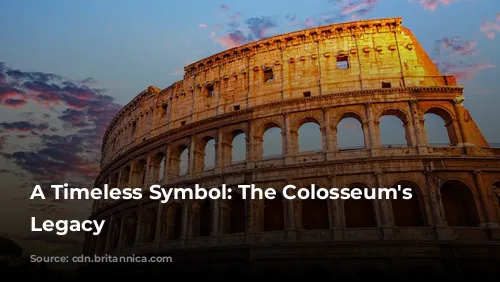The Colosseum, a magnificent monument standing tall in the heart of Rome, is a testament to the architectural brilliance and engineering prowess of the ancient Roman Empire. More than just a historical landmark, the Colosseum is also a major economic powerhouse for Italy, attracting millions of tourists each year. In fact, in 2018, the Colosseum, alongside the Roman Forum and Palatine Hill, generated over $63.3 million (€53.8 million), making it the highest-grossing tourist attraction in all of Italy.
This impressive revenue stream is a direct result of the Colosseum’s enduring appeal. The Colosseum has stood the test of time, weathering the storms of history and emerging as a symbol of the Roman Empire’s grandeur. Its intricate design and impressive scale have captivated visitors for centuries, leaving them in awe of the Roman’s engineering mastery.
A Journey Through Time: The Colosseum’s Transformation
While the Colosseum currently stands as a proud testament to the past, its journey to becoming a beloved tourist destination has been fraught with turmoil and neglect. Following the fall of the Western Roman Empire, the Colosseum fell into a state of serious disrepair.
For centuries, the Colosseum was used for purposes far removed from its original intent. In the 12th century, the Frangipane and Annibaldi families turned the arena into their personal fortresses, a stark contrast to its past grandeur. The Colosseum was further desecrated in the late 15th century when Pope Alexander VI allowed the structure to be used as a quarry, stripping away its valuable materials for other construction projects.
Fortunately, after over a thousand years of neglect, the Colosseum received much-needed attention in the 1990s, with state-funded restoration efforts aiming to preserve this iconic monument for future generations.
A Symbol of Power: The Colosseum’s Origins
The Colosseum’s construction marked a pivotal moment in Roman history. Built during the reign of Emperor Vespasian between 70 and 72 CE, the Colosseum was a deliberate attempt to revitalize Rome after the tumultuous “Year of the Four Emperors” in 69 CE.
The Colosseum was intended to be a symbol of Roman power and imperial authority. Vespasian, drawing inspiration from other Roman amphitheatres, envisioned the Colosseum as a grand entertainment venue, hosting a variety of spectacles, including gladiator fights, animal hunts, and even mock naval battles. These events served to entertain the masses while simultaneously showcasing the power and wealth of the Roman Empire.
Construction of the Colosseum was further fueled by the plunder acquired from Titus’s sack of Jerusalem in 70 CE. This act of conquest was a major source of wealth for the Roman Empire, and the Colosseum became a symbol of their triumph over the Jewish people. Notably, the Colosseum was built by enslaved Jews from Judaea, a stark reminder of the dark side of the Roman Empire’s power.

A Monument to Engineering: The Colosseum’s Construction
The Colosseum, a testament to Roman ingenuity, stands as an elliptical structure built with stone, concrete, and tuff, reaching four stories tall at its highest point. Measuring 620 by 513 feet (189 by 156 meters), it could accommodate a staggering 50,000 spectators, a feat of engineering that was unmatched in its time.
The Colosseum was constructed on the grounds of Nero’s Golden House, replacing the former emperor’s artificial lake. This deliberate choice was symbolic as Vespasian, whose rise to power began humbly, sought to replace the tyrannical Nero’s private pleasure with a public amphitheater dedicated to the Roman people.
The Colosseum’s design was revolutionary for its time. Unlike earlier amphitheatres that relied on hillsides for support, the Colosseum was a freestanding structure built entirely of stone and concrete, using a complex system of barrel vaults and groin vaults. Its facade was adorned with engaged columns, following the Doric, Ionic, and Corinthian orders, a design that would later influence Renaissance architecture.
A Stage for Spectacle: The Colosseum’s Purpose
The Colosseum was not simply a structure; it was a stage for spectacles, a testament to the Romans’ love for entertainment. The arena was equipped with a retractable awning, known as a velarium, that provided shade for the spectators during the heat of the day. This ingenious system required hundreds of Roman sailors to manipulate the rigging that extended and retracted the awning, demonstrating the Roman Empire’s remarkable capacity for organization and logistics.
The Colosseum served as the venue for thousands of gladiator combats, animal hunts, and even mock naval battles. These spectacles served as a form of public entertainment, drawing vast crowds who eagerly awaited the thrill of the contests. While the martyrdom of early Christians in the Colosseum is debated, the arena’s history is undeniably linked to the Roman Empire’s brutal and often violent past.
From Glory to Neglect: The Colosseum’s Transformation
As the Roman Empire declined, so too did the Colosseum. During the Medieval Period, the Colosseum fell into disrepair, its grandeur overshadowed by neglect. The structure was repurposed as a church, and later, as a fortress for the Frangipane and Annibaldi families, who used the arena for their own personal gain.
Over the centuries, the Colosseum suffered from lightning strikes, earthquakes, and vandalism. Valuable materials like marble seats and decorative elements were stolen, leaving the Colosseum in a state of ruin. For over a thousand years, the Colosseum was treated as a quarry, a source of building materials for other projects, further exacerbating its decline.
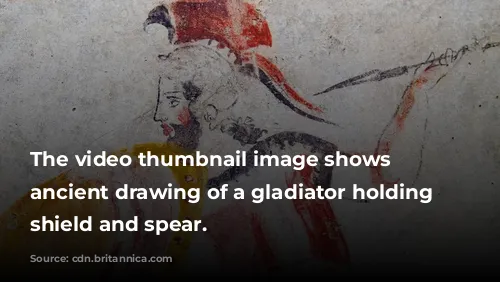
Revival and Recognition: The Colosseum’s Modern Legacy
The 19th century marked a turning point in the Colosseum’s fate. Preservation efforts, led by Pope Pius VIII, finally started to revitalize the ancient monument. The 1990s saw the implementation of a major restoration project, dedicated to bringing the Colosseum back to its former glory.
Today, the Colosseum stands as a major tourist attraction, welcoming millions of visitors each year. The structure serves as a constant reminder of the Roman Empire’s remarkable achievements, inspiring awe and wonder in those who stand before its imposing presence. The Colosseum continues to host exhibitions related to ancient Roman culture, ensuring that its legacy lives on for generations to come.
